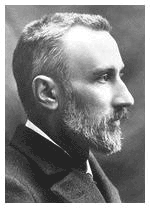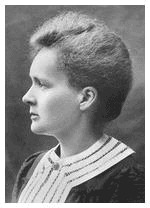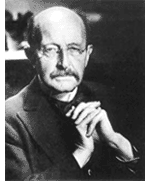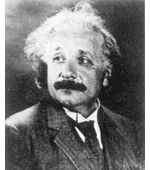|
Rutherford had no right to be arrogant, because physics was in just
as bad shape. For a few years around 1890 it had begun to look like
a closed and finished subject, with well behaved "billiard ball"
atoms moving according to Newton's laws of motion.
The dilemma of the wave or particle nature of light was a puzzle,
but surely only a minor one. Then in the space of a few years, the
world of physics came unstuck at the seams.
The Curies discovered that atoms could decompose. Max Planck and
Albert Einstein showed that waves behaved like particles, and that
"solid" particles had wave properties. The differences between mass
and energy began to blur, and the substantial atom began to fade.
Clockwise from top left:
Pierre Curie (1859 - 1906)
Marie Curie (1867 - 1934)
Albert Einstein (1879 - 1955)
Max Planck (1858 - 1947)
|
 
 
|



